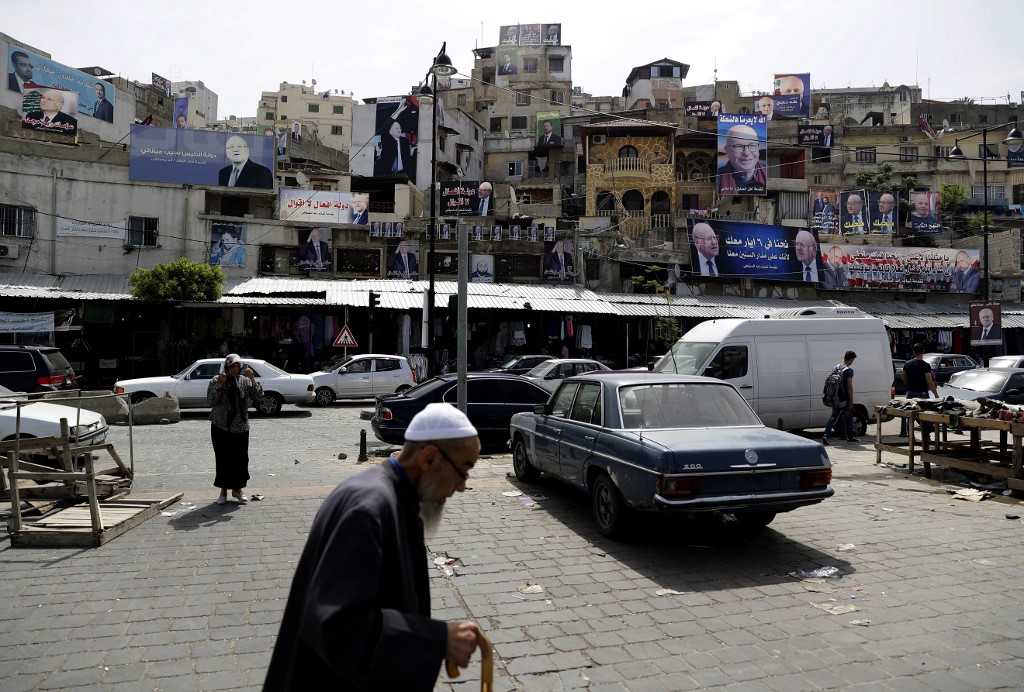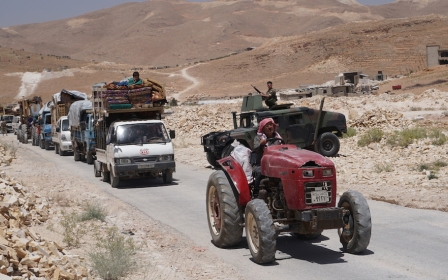Lebanon’s Tripoli: A city of bright hopes and dashed dreams

When the Syrian uprising began more than eight years ago, no one could have imagined it would last this long – not least many of the Syrians who left their homes to escape the conflict.
Earlier this month, I returned from Tripoli, Lebanon, where I was making a BBC Radio 4 documentary – City of Refuge – on the Syrian refugees living there.
Tripoli is a city that deserves more than a footnote in the story of Lebanon. It is the country’s second-largest city, with a population of around 400,000 permanent residents, 50,000 Palestinian refugees and now an estimated 100,000 Syrians. It is rich in history, with Crusader relics and a clear Mamluk heritage.
No-go zone
As my producer and I entered the city, our driver from Beirut pointed out the mountains in the distance, which had been the site of clashes between the Islamic State and Lebanese forces that spilled into the city just a few years prior. “They’re still here, but underground these days,” he explained as we made our way through the winding roads.
Stay informed with MEE's newsletters
Sign up to get the latest alerts, insights and analysis, starting with Turkey Unpacked
Tripoli is still considered a no-go zone for foreign visitors, and considering recent history, it’s not hard to see why. It’s been the site of sectarian tensions for decades; these have only been exacerbated by the war in Syria. Some of the worst fighting has been in the warring neighbourhoods of Jabal Mohsen and Bab al-Tabbaneh, home to Alawite and Sunni residents who are split over allegiances in Syria, but largely share the acute poverty of the area.
Tripoli’s dreams have been replaced by the reality of thousands of desperate refugees queuing for services that the UN is largely too stretched to offer
We headed to the Reconciliation Cafe, founded in 2016 by Lea Baroudi as part of an NGO initiative to bring residents together in a shared space. It’s been a remarkable testament to its ideals: As we arrived, a large group of mostly men were returning from a construction site where they had been working to rebuild parts of the neighbourhood destroyed by their fighting.
Most said that until recently, they had only ever met someone from the “opposing” side in prison. Several had served time.
Part of the project’s success lies in its willingness to tackle the material conditions that incubate violence: poverty, unemployment, hopelessness. The cafe isn’t just a place where people meet for coffee; it offers therapy sessions, education and perhaps most crucially, paid work – but only for those willing to work alongside those they might previously have seen as the “enemy”.
A new chapter
Ali, an Alawite who runs the cafe, was widely feared in this neighbourhood before his involvement with the cafe; his story painted a picture of religious extremism far beyond the tropes of “ancient hatreds”. Instead, we heard about a young man with little hope for his future, struggling to get by and in the grips of drug addiction – a wider problem in these neighbourhoods, where government posters warn against the epidemic.
What enabled Ali to change his life he said, was a combination of material, psychological and medical support, within a framework that allowed him to meet the almost-mythical neighbours he’d heard so much about, but never met.
It would be a cliche to say that the men from opposing factions today embrace each other like brothers, but that was exactly what I saw. Much like elsewhere in Tripoli, you get a sense of a city brimming with hope for a new chapter, free from the political violence and divisions that have marked its history and its frustrated relationship with the capital Beirut.
In Tripoli, you’re actually closer to Syria than you are to Beirut, and many people I met spoke of a family that extended far beyond the Lebanese border. When the war broke out those with relatives in Tripoli sought refuge, believing they might only be staying for a few months.
As time has gone on, homes have become overcrowded, and money is running out. As Syrians have had to adapt to living in this northern city, they have also had to seek out jobs in the limited sectors in which they are permitted to work. For some, it has meant having to send their children out to work – a noticeable workforce of kids selling sweets and tissues in parks and at traffic lights, despite the ever-present risk of violence and trafficking.
Competition for jobs
There has been some friction over competition for scarce jobs in Tripoli and decreased wages – issues upon which some politicians have been quick to capitalise. These tensions are often expressed in whispers, with exasperation at the wider problems facing the Lebanese people in terms of inadequate education, expensive medical care and intermittent electricity. Many feel the shaky infrastructure has been further strained by the protracted Syrian presence.
Still, the frustrations I heard often came with the caveat that the instability of their neighbours could easily be their own – a resignation to a reality that suits no one. Some Syrians have already started to try to return home; a few hundred in Tripoli have reportedly left in hopes of escaping the time warp that is living in exile, despite ongoing security concerns.
Hundreds of refugees still queue every day outside the UN refugee agency (UNHCR) offices – a makeshift container “city” just metres from the iconic Rashid Karameh International Exhibition Center, an architectural masterpiece built by the Brazilian Oscar Niemeyer in the 1960s.
Their juxtaposition speaks to the dashed hopes of this city. With its out-of-use airport and crumbling fairgrounds, Tripoli’s dreams have been replaced by the reality of thousands of desperate refugees queuing for services that the UN is too stretched to offer.
A familiar tale
Medical care in Lebanon is expensive, and although the UN covers some expenses in emergency cases, many families cannot afford treatment. The mayor himself confirmed stories of hospitals withholding babies from families who could not afford to pay their medical bills. Those whose illnesses were serious, but not life-threatening, were often left unable to access treatment.
Their aspirations and talent were far bigger than the opportunities in front of them
The situation of Syrian refugees in Tripoli cannot be limited to a single experience. Class divisions between wealthier families with local contacts and more rural, poorer families who arrived in Lebanon with nothing, are striking – as were the similarities between the neutered dreams of young people, whether Lebanese or Syrian, who are all too aware of the borders limiting their aspirations.
A mixed group of young people we met spoke of their dream of creating a band called the Troubadour, which would tour the world spreading messages of love and peace. Their aspirations and talent were far bigger than the opportunities in front of them.
In that disconnect is an all-too-familiar tale in this region of ebullient youth, brimming with hopes and ideals, frustrated by a reality with no obvious change in sight.
The views expressed in this article belong to the author and do not necessarily reflect the editorial policy of Middle East Eye.
Middle East Eye delivers independent and unrivalled coverage and analysis of the Middle East, North Africa and beyond. To learn more about republishing this content and the associated fees, please fill out this form. More about MEE can be found here.







